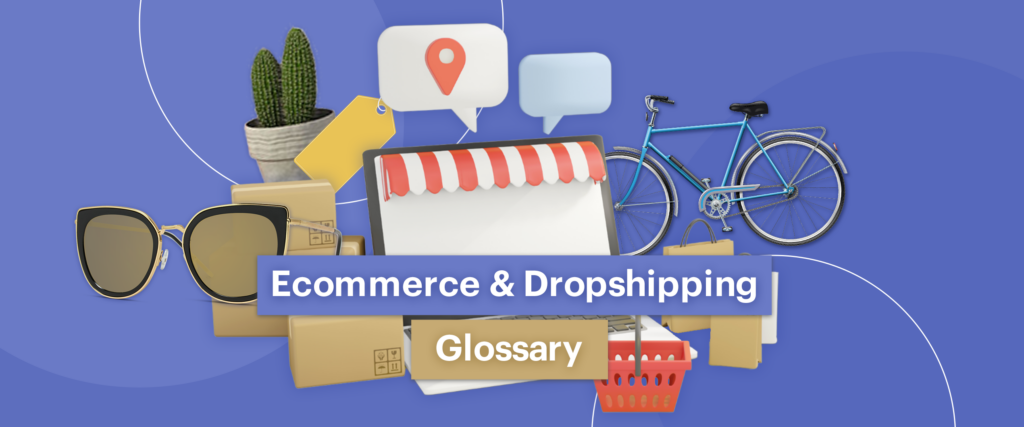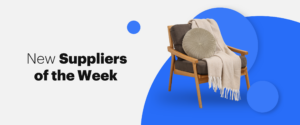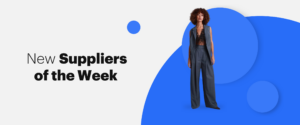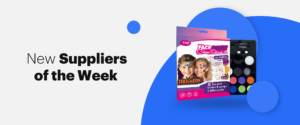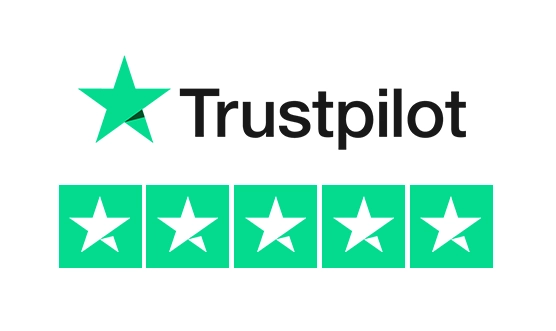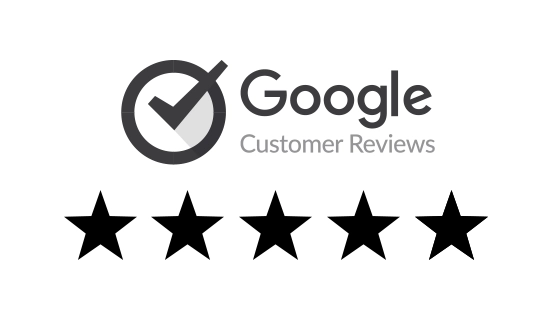Are you new to online trading and dropshipping? Don’t worry! We are here to provide you with an ecommerce and dropshipping glossary to help you understand the most important terms on the market. Our aim is to make sure you won’t feel completely lost when starting working on an online store and looking for suppliers, and products to sell.
Although it could be a way to start this ecommerce and dropshipping glossary with the most important definitions, we decided to arrange them in ABC order. The answer why is very simple. If you are looking for a specific term, it will be easier for you to find it.
If you are on the market for a long time but still being new to, for example, dropshipping, this article also suits you best! It is for everyone, from small to big online retail businesses, or even for manufacturers!
Want to test your knowledge? You should do so! 😉
Now let’s see which terms we added to our ecommerce and dropshipping glossary we think one must know if running an online store!

Ecommerce & Dropshipping Glossary for Every Business
A
Ecommerce & dropshipping glossary – Must-know definitions beginning with the letter “A”.
Abandoned Cart: It is a term for the situation when a potential customer adds a product to their shopping cart in your online store but instead of actually purchasing and completing the order, they leave the site.
Abandoned Cart Recovery: If a customer abandons their cart, you can automatically send reminders to them. For this, you can use for example applications that manage this process for you, sending an email or another kind of notification to the customer. It reminds them to complete their order, and you can get more income.
A/B Testing: You can A/B test a lot of things, for example, an online store, a product or a newsletter. You compare two versions of the certain content to see which one performs better, which one has a better conversion rate.
Affiliate Marketing: It is a performance-based marketing method. The online store owner sends products to an influencer, an online publisher — who creates content on Instagram, YouTube, TikTok, Facebook, or a blog. The influencer publishes posts of the product, and they get paid for doing this. There are more methods on what way they work together and agree on providing something in return for the promotion. The influencer can either get a recurring commission of a certain percentage by referring new buyers to a service, or they can get a fixed amount payment; just to mention a few.
AIDA: It is a marketing model. An English acronym consisting of the following words:
- Attention: make people become aware of a product, a brand, or any content.
- Interest: make people become interested, raise interest.
- Desire: raise desire, make people feel a need for your product or what you have.
- Action: it is a call to action, make people have the intention to e.g. purchase.
API – Application Programming Interface: This code allows two softwares to communicate with each other, they have access to each other’s system. APIs let you open up access to your resources while maintaining security and control. These are “a simplified way to connect your own infrastructure through cloud-native app development, but they also allow you to share your data with customers and other external users.” We can talk about Private, Partner, and Public APIs. (s)
B
Ecommerce & dropshipping glossary – Must-know definitions beginning with the letter “B”.
B2B – Business-to-Business: It describes companies that are selling products to other businesses.
B2C – Business-to-Consumer: It describes companies that are selling products directly to consumers.
Black Friday: It is an online shopping holiday that comes from the US but has already grown to be popular worldwide. Retail stores offer significant discounts on this day. It’s usually the day after Thanksgiving.
Blog: Blog is a section, menu on a website where the owner of the website can share their own articles they write. If the writer took care of the SEO of the article, the page will rank higher on Google searches. Writing articles and sharing them is way of promoting a product and helping customers understand how that product works.
Bounce Rate: It refers to the percentage of people who visited a website but then leave that without clicking on anything.
Branding: It’s about creating a unique brand so that people can recognize it anytime. Branding involves the name, logo, message, specific design elements that you use when advertising. It has to attract people and make them loyal. This is something that makes you be different than the others on the market. It gives a unique vibe to your business.
Brick and Mortar: It is a physical shop with products in stock on the shelves, where people can go and buy the retailers’ products in person.
Bulk Management: Bulk means a large quantity. When the retailer manages product data in a large quantity, or they stock physical inventory of products in a large quantity, they do it in bulk.
C
Ecommerce & dropshipping glossary – Must-know definitions beginning with the letter “C”.
Compare at Price: This is what appears in your shop as an older, higher price when you would like to offer a discount for the customers. They can compare the old price with the new, discounted price and decide accordingly.
Conversion (rate): “A term Conversion, in simple words, is a point when an anonymous website visitor converts to a customer after making a purchase. Thus the result of the response to a Call-To-Action is called conversion.” Also, “Conversion Rate is a marketing concept measured in percentage. It is a rate at which visitors convert on a site, which means dividing the number of people who transformed into paying customers by the number of visitors that visited the site.” (s)
CPC – Cost Per Click: It is the rate paid for a click on an advert.
Cross-selling: Cross-selling is when the retailer offers a related product to the customer based on what they are interested in or already placed in their cart. Like this, you can grow your income.
CSS: It is the abbreviation for Cascading Style Sheets. CSS used by web designers to create, describe and style the look of the website. It provides layout and visual formatting of HTML pages.
CTA – Call to Action: It is a marketing concept where you call your target audience to take an action. It is like an instruction, a conspicuous content, button, image, a text on it like “Get it now”, “Subscribe now”, and so on.
CTR – Click Through Rate: It “is the percentage of individuals viewing a web page who click on a specific advertisement that appears on the page. Click-through rate measures how successful an ad has been in capturing users’ interest. The higher the click-through rate, the more successful the ad has been in generating interest.” (s)
Customer/Consumer: Customer is who browse your products in your store with the intention of buying goods from you.
Cyber Monday: This is the Monday after Black Friday. The retailer provides tempting discounts to customers and uses promotions to encourage people to buy online.
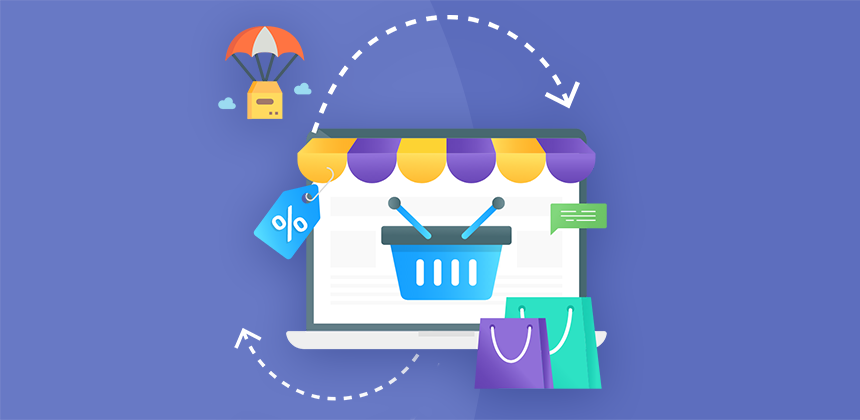
D
Ecommerce & dropshipping glossary – Must-know definitions beginning with the letter “D”.
Datafeed File: In the context of running an online store, it is a datafile that contains all data of the products you wish to have in your online store. It can be an always updating file, via for example a URL, so your products can stay always up-to-date. It’s easy to manage product data in bulk with this file.
When do you need it? If ypu cannot find the supplier on Syncee Marketplace who you want to work with but the supplier who you are in contact with can provide a product datafeed file, you can bring this file in any formats like CSV, XML, XLS(X), JSON or TXT to Syncee, and you can automate the product management processes.
Discount Code/Coupon Code: This is a code – numbers or letters – that online stores offer to potential customers so that if they order products from the online store, they can get a discount or another product as a gift. They have to type this code in a certain field at the checkout.
Domain name: “Domain name is a unique name which is a part of the network address that locates an organization or other entity on the Internet. You can find a domain name on the address bar of the web browser while visiting the website.” (s)
Dropshipping: It is an online trading/retail fulfillment method. The retailer doesn’t have a real inventory of the products they have in their online store. No upfront investment in stock needed. When retailers use the standard way of dropshipping, the supplier sends the product directly to the customer. The money moves between the customer and the online store, then the online store and the supplier.
E
Ecommerce & dropshipping glossary – Must-know definitions beginning with the letter “E”.
E-commerce: “E-commerce […] refers to the buying and selling of goods or services using the internet, and the transfer of money and data to execute these transactions. E-commerce is often used to refer to the sale of physical products online, but it can also describe any kind of commercial transaction that is facilitated through the internet.” (s)
Ecommerce Platform: An ecommerce platform is a software application that allows online commerce businesses to create and manage their online store. It provides tools to run sales, marketing, order fulfillment, and other relevant processes.
F
Ecommerce & dropshipping glossary – Must-know definitions beginning with the letter “F”.
Facebook Ad: In a nutshell we can say that companies can create Facebook advertisements for money. These are post images, banners people can click on. It directs them to the advertiser’s website. This content appears on the Facebook News Feed on the desktop or mobile, and in the right side of the feed page on desktops.
Filtering: Let’s stay in the context of being a retailer, browsing and managing products on Syncee Marketplace. When looking for products on Syncee Marketplace, you can set filters on what kind of search result you want to see. When you added products to your Syncee catalog in bulk, you can set filters if you do not want to sell all products of your chosen supplier.
Fulfillment: When a customer places an order in your online store, it has to be executed by making the product ready for delivey to the customer. It might involve warehouse pickup, packaging labeling, and other.
G
Ecommerce & dropshipping glossary – Must-know definitions beginning with the letter “G”.
Google Ad: It is Google’s advertising service. Businesses have to pay a certain amount of money so that their promotions will be shown on the top of the Google search results if someone looks for a relating topic.
H
Ecommerce & dropshipping glossary – Must-know definitions beginning with the letter “H”.
HTML – Hypertext Markup Language: It is a markup language that is good to know for those who want to create content online, for example writing articles. It makes styling texts easier. It’s created for displaying, styling web pages or web applications, for example.
K
Ecommerce & dropshipping glossary – Must-know definitions beginning with the letter “K”.
Keyword: Keywords are those words that are reflecting a certain website, webpage, post, or any content online. They are useful in site rankings as for SEO (Search Engine Optimization). If you use effective keywords, people can find your site in an easier way. They can also called tags.
L
Ecommerce & dropshipping glossary – Must-know definitions beginning with the letter “L”.
Landing Page: These are the pages where people land after clicking on a link. It can be the main page of your site or any other single page. These exist to make sure that visitors will take the desired step, for example to buy a certain product or to subscribe to the company’s newsletter.
M
Ecommerce & dropshipping glossary – Must-know definitions beginning with the letter “M”.
MAP – Minimum Advertised Price: This is the lowest price at which you can advertise products for sale in your store. It creates a balance between value and marketability.
Margin: It shows the difference between the price the supplier offers their products to retailers, and the price the retailer sells that product at. It can be given in a fixed amount or in percentage. The supplier can recommend a price margin to retailers to add to their wholesale/dropshipping price of the products.
Meta Description: “The meta description is one of a web page’s meta tags. With this meta information, webmasters can briefly sketch out the content and quality of a web page. The page description for a web page is usually displayed when the page for a specific query is listed as a snippet in the SERPs.” (s)
MSRP (also as SRP or RRP): This is the price the supplier recommends the retailer to use in their store. You should consult with your supplier and ask whether you are allowed to sell the product at a lower price than this.
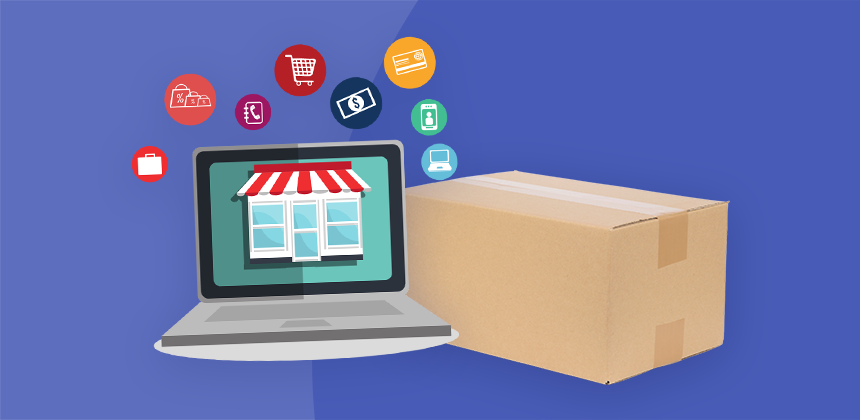
N
Ecommerce & dropshipping glossary – Must-know definitions beginning with the letter “N”.
Niche: It is a distinct, small but profitable market segment. You can use it in many fields in life, but in e-commerce it mostly refers to a specific segment of products, product types. It suits certain needs and satisfies people.
O
Ecommerce & dropshipping glossary – Must-know definitions beginning with the letter “O”.
Omnichannel Retailing: “Consider this as the next generation of cross-channel and multi-channel retail. Omni-channel means establishing a presence on several channels and platforms (i.e. brick-and-mortar, mobile, online, catalog etc) and enabling customers to transact, interact, and engage across these channels simultaneously or even interchangeably. Giving the customer the convenience and flexibility to purchase an item using your shopping app, and then letting them pick up the merchandise in your store, plus allowing them to process a return via your website.” (s)
Open Rate: This is a percentage that refers to the number of people who opened the email you sent them. To get this percentage, you have to divide the number of emails opened by the total number of the messages sent.
P
Ecommerce & dropshipping glossary – Must-know definitions beginning with the letter “P”.
Payment Gateway: “A payment gateway refers to the front-end technology that reads payment cards and sends customer information to the merchant acquiring bank for processing.” (s) When you have an online store, you will have to decide which payment gateway you will work with to process payments.
Pop-up: These are those small windows that pop up, for example, when you are about to leave a website. Most of the time the site owner offers a discount code or a good sale opportunity here or ask you to subscribe to their newsletter.
POS – Point of Sale: This is the place “where retail transactions are completed. Traditionally they comprised of cash registers, as well as a debit/credit card reader. However modern POS systems can offer merchants more complex functionality such as inventory management, CRM, financials, warehousing etc.” (s)
Price Margin: It shows the difference between the price the supplier offers their products to retailers, and the price the retailer sells that product at. It can be given in a fixed amount or in percentage. The supplier can recommend a price margin to retailers to add to their wholesale/dropshipping price of the products.
Private Label: When the manufacturer offers merchants the opportunity of not using the manufacturer’s name on the products, we call it a private label. Others can sell the products under their brand name.
Product ID: It is an ID that helps identify products. Each product has a unique product ID. It is a made of letters and numbers. Product ID also collects the variants to one product in a group. This is the same for all variants of a product.
R
Ecommerce & dropshipping glossary – Must-know definitions beginning with the letter “R”.
Reseller/Retailer: “A company that purchases goods or services for the purpose of resale not consumption. In web economics, a reseller may also be a form of affiliate marketer, promoting a rebranded service.” (s)
ROI – Return on Investment: It is the measurement, the checking of how profitable an investment was. It is about the performance the company used. Traders can also compare multiple investments as for the profitability and efficiency.
S
Ecommerce & dropshipping glossary – Must-know definitions beginning with the letter “S”.
Saas: This abbreviation refers to the term Software as a service and is a software distribution model. In this model, there is a center/base/third-party provider and there are applications, smaller services that people can use for their business. There has to be a subscription to the software, but the maintenance is easier for those Saas’s.
SEO – Search Engine Optimization: It is a term used in marketing. SEO helps to provide traffic to a site from search results. It’s a free service, and it’s like metadata, based on keywords and texts written to reflect the certain content, site. Moreover, can be used for images, videos too. You can optimize search rankings with it so that you can drive traffic and can increase awareness in search engines.
SERP: It means the Search engine result page. It is a page that will be shown after a Google search. SEO helps you to move up the SERPs, so your website’s position would be better among the results, for example getting to the first page’s top from the second page.
SKU: It is the abbreviation of the Stock keeping unit term that refers the products you have in your online store, not looking at the variants. These are warehousing items, unique ones with a unique identification number.
Supplier: A supplier is who offers products to retailers at wholesale/retail prices. The supplier is not necessarily the manufacturer of the products it offers. They sell in B2B.
T
Ecommerce & dropshipping glossary – Must-know definitions beginning with the letter “T”.
Target Marketing: “Target Marketing involves breaking a market into segments and then concentrating your marketing efforts on one or a few key segments consisting of the customers whose needs and desires most closely match your product or service offerings. It can be the key to attracting new business, increasing your sales, and making your business a success.” (s)
Tracking Number: When a customer orders a product, a unique tracking number will be generated for the order that will help the customer, the store and the delivery company to identify the package when they are in the proces of being shipped out.
U
Ecommerce & dropshipping glossary – Must-know definitions beginning with the letter “U”.
Upselling: It is a term used when the online store offers a related product to what the customer is currently checking, or has placed into their cart. It’s quality is better than the product they have already chosen. It helps the retailer gain higher income.
UI – User Interface: User interface is the point of the interaction between human and computer and how they communicate with one another. When creating an interface, designers focus on the looks and style, they call this interface-building process UI design.
USP – Unique Selling Proposition: It is a feature of a product or service that makes it unique, different than other similar ones on the market. In marketing, people can use it efficiently when it’s time to promote.
UX – User Experience: User experience is how a user, a visitor of a site interacts with the website and what they experience. When companies design a website and create the structure of it, they keep customers in the main focus so their user experience on the site would be good. It’s important for everything to be straightforwards, easy-to-use, and easy-to-find.
V
Ecommerce & dropshipping glossary – Must-know definitions beginning with the letter “V”.
Variant: If the product is available in more sizes, colors, materials etc, it means the product has more versions, more variants.
VAT – Value Added Tax: It is a general consumption tax assessed on the value added to a product or service. It is charged on almost every product and service when sellers add value to them. Customers pay the VAT that is mostly a percentage of the price of the product.
W
Ecommerce & dropshipping glossary – Must-know definitions beginning with the letter “W”.
Wholesale: Wholesale is a trading method when the retailer buys the products in bulk from the supplier before starting to sell them. The retailer will have its own physical product inventory.
Wholesale Price: This is the cost of the product that online store owners pay to the wholesale supplier. This price is lower the product’s retail price that could be seen in online stores.
Was this ecommerce & dropshipping glossary helpful? Stay tuned for more!
After checking the ecommerce & dropshipping glossary we created for you… Do you have any questions about Syncee? Feel free to send us a message via chat or email. Syncee is a B2B dropshipping and wholesale platform designed to help retailers and suppliers connect. Syncee heps automate product data management processes for online merchants.



